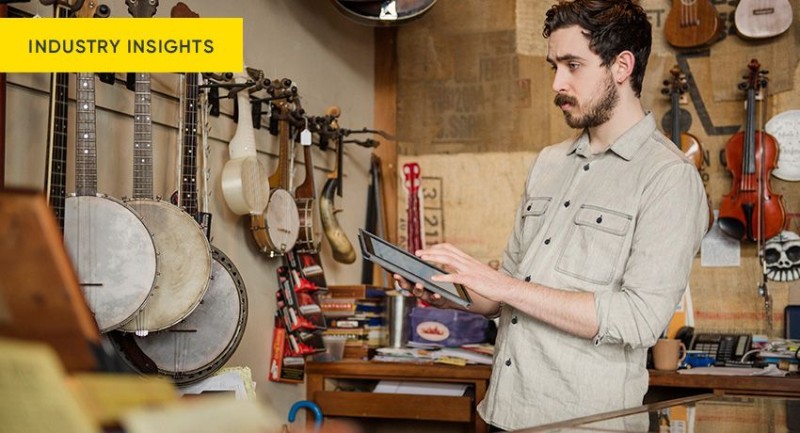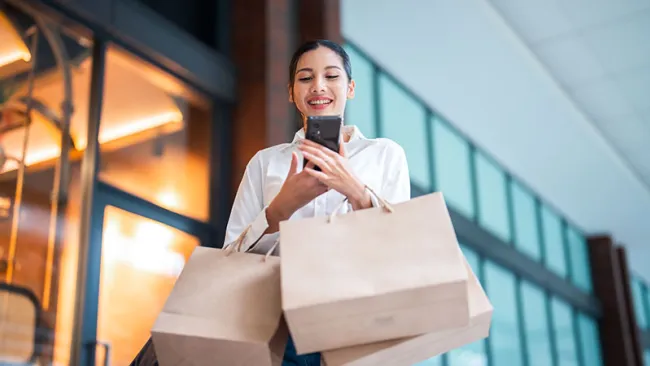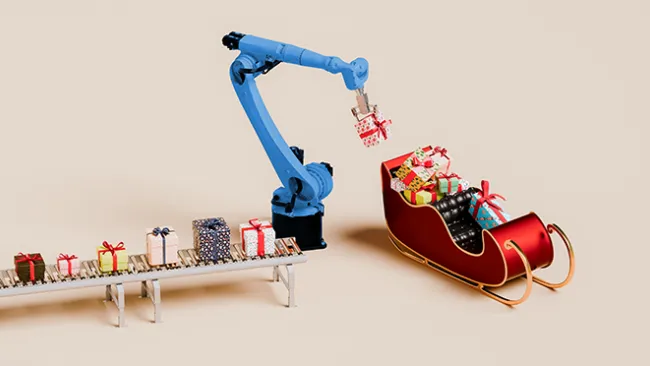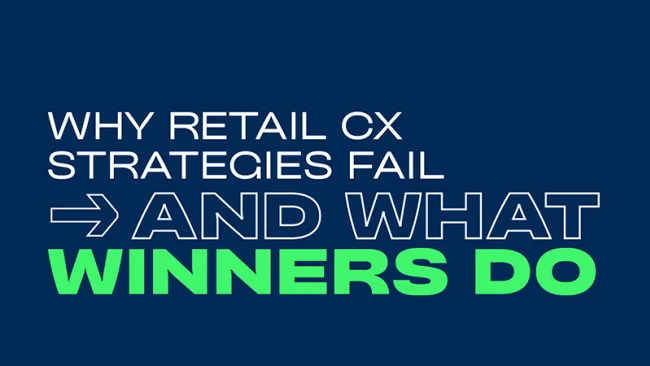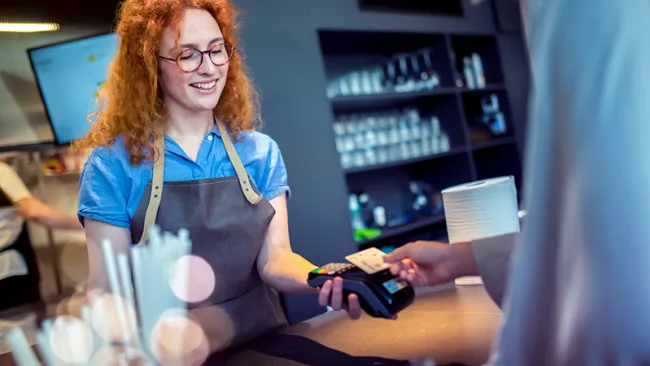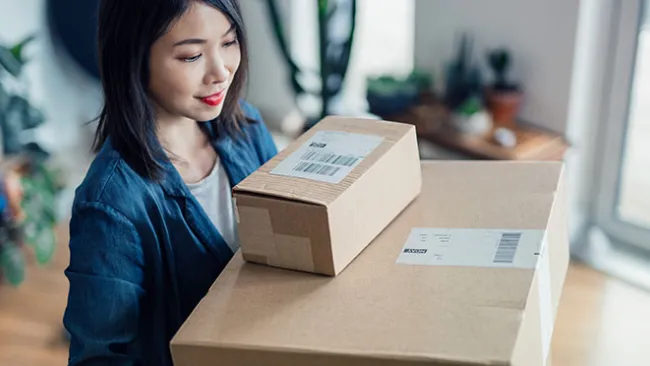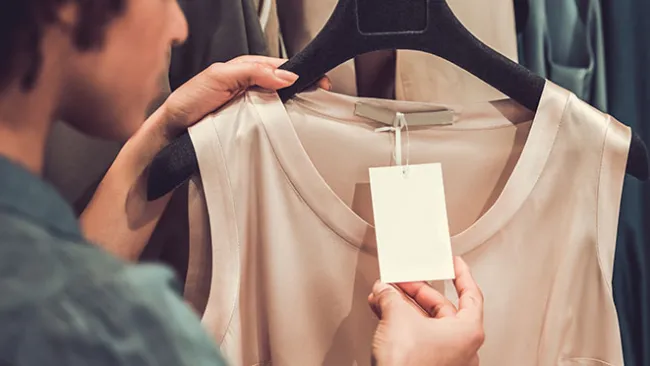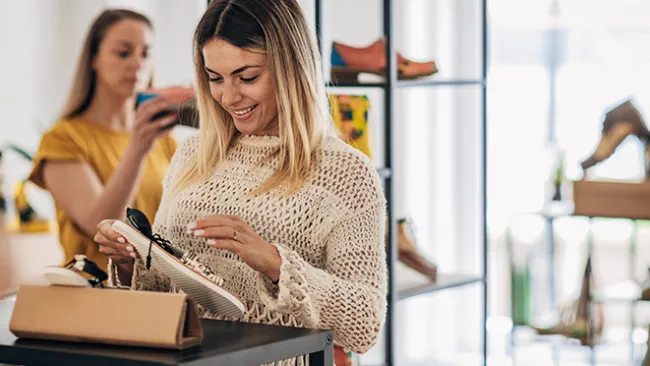The rapid changes and adaptations that retailers put in place at the onset of the COVID-19 pandemic greatly influenced shopper expectations. Consumers today expect to seamlessly move between digital and physical worlds at their convenience. They also expect brands to reflect their values and preferences.
As restrictions are lifted and the economy continues to accelerate, retailers are racing to scale these short-term solutions efficiently and effectively. Many are upgrading their technology, acting on customer insights, and expanding new channels for browsing, buying, and interacting to keep pace with – and even stay ahead of – expectations. Here's how a few companies are reimagining the retail experience of today and the future.
Short-term solutions show staying power
Business owners are finding that some pandemic-era investments in technologies from online video to augmented and virtual reality have a high retention rate, with opportunities for further innovation.
Consider Chris Lynam, owner of several Arthur Murray dance studios in California and author of “The Choreography of Customer Service: High Touch Service in a Touch Free World.” Dance studios were immediately impacted by the mandated lockdowns that swept the state in the early days of the pandemic.
“Bit by bit everyone started to roll out Zoom lessons and that became the new standard practice,” says Lynam. “Converting everything into a digital event was challenging but some of our staff became really great video editors and on top of that, we started doing digital solo dance routines and some of the most creative routines that could never be replicated in person came out of this challenge of converting something into digital.”
Even after the studio resumed in-person dance lessons, some students continued to request online lessons, Lynam notes. Online video turned out to be a great opportunity for students who relocated to other cities for instance, to continue with their lessons from their favorite instructors. “This is something we never would have taken the time to discover but now we're going to continue to do things like digital Halloween specials and holiday specials with skits from our staff that are mixed with dance information,” Lynam says.
Other retailers are exploring deeper integrations of augmented reality (AR) and to some extent, virtual reality (VR), in the customer experience. While AR and VR have been around for years, only recently have retailers and consumers started to pay attention to these emerging technologies and the possibilities that they offer.
AR-enabled virtual try-ons, especially for products like eyewear, gained a much wider audience when more consumers turned to e-commerce in the last two years. Brands such as Warby Parker, GlassesUSA, Fitz Frames, EyeBuyDirect, and others all offer a virtual try-on service using AR technology.
"As consumers become more comfortable shopping online for eyewear, we want to ensure their purchase journey is welcoming, easy and interactive," Alex Alekseev, director of UX, EyeBuyDirect, tells Chain Store Age in a 2021 article. "We're excited to offer our customers even more ways to enjoy the eyewear shopping experience and to feel confident about their purchase."
Brands and consumers have been slower to adopt VR since it requires more hardware than AR and the experience is harder to perfect, but Mark Zuckerberg’s attempts to build the metaverse could be the catalyst that propels other brands to join his company in a virtual world. Brands such as Adidas, PricewaterhouseCoopers, Samsung, Miller Lite, and more have already invested millions of dollars in virtual real estate in the metaverse.
Reimagining the purpose of a store
Retailers are rethinking store formats, the purpose that stores serve, and are moving away from flagships in some cases. In an effort to create more impactful shopping experiences, brands such as Nike, REI, and others are transforming some of their stores into experiential and neighborhood-based destinations.
Nike has been rolling out a variety of new store formats, including Nike Live, a store concept with a smaller footprint that is aimed at local markets with décor and products that reflect communities. A Nike Live store in Eugene OR, for example, carries run maps that point out sites of importance to Nike and the images of athletes with ties to Eugene, reports RetailDive.
Nike plans to launch between 150-200 similar Nike Live stores globally over the next few years. The stores will include digital-enabled in-store features, such as a vending machine that pairs with Nike’s app that Nike members can “unlock” to claim free monthly gifts and products. The stores also offer curbside pickup and buy-online-pickup-in-store (BOPIS) for online orders.
REI is also dabbling in stores that emphasize experience and ties to the community. This summer, the retailer plans to open its ninth location in Colorado, which will include features such as a full-service bike and ski shop, gear rentals, BOPIS, curbside pickup, and virtual outfitting. In 2020, REI launched a new co-op store in New Hampshire that featured spaces that could double as a meeting space for customers to learn about recreational opportunities in the area. Products that shoppers in the area were most likely to use are also prioritized, according to the company.
Macy’s and Bloomingdale’s are also exploring smaller format stores in strip centers. Additionally, instead of more flagship stores, “expect to see mall space welcome new businesses and change from shopping to other uses, whether office space (think businesses like WeWork), civic activities (think city and state government offices), residential buildings, or something else again,” writes Sucharita Kodali, Forrester VP and principal analyst, in a blog post.
If the last two years was about adapting stores to help shoppers avoid crowds and maintain social distancing, now it’s about creating in-store experiences that seamlessly weave physical and digital worlds together as a reflection of consumers’ new reality.
Retail sustainability: From nice-to-have to must-have
Until recently, sustainability and environmental responsibility barely existed in the retail lexicon. Today, these are hot topics among CEOs and other retail leaders. What changed? When customers started to care about the environment, retailers started to care too, observes David Langlois, vice president, retail digital solutions at TTEC.
“Retailers are looking to accomplish zero carbon emissions by 2040 because their customers are demanding it,” Langlois says. “In this competitive marketplace, retailers have learned that their customers want to buy from companies that share their same values.”
A recent survey by Acosta, a sales and marketing services provider that focuses on CPG brands and retailers, found 60% of consumers are paying more attention to product packaging and its impact on the environment and 65% want retailers to invest more in sustainability. Notably, respondents also expressed a willingness to pay more for sustainable products.
Sustainability and the environment were major topics at NRF 2022. In a keynote session, Pepsi CEO Steven Williams talked about sustainability concerns and its impact on the value chains of products from the farm fields to packaging compostability. Ralph Lauren CEO Patrice Louvet said his company intends to play a “leadership role” in sustainabilityand Walmart and Rothy’s executives discussed the importance of getting supply chains optimized to meet their sustainability and climate goals.
Looking ahead
A common thread between retailers’ attempts to reimagine the customer experience is how they're altering existing practices, technologies, and services in different ways to meet new consumer expectations. Brick-and-mortar locations from stores to dance studios are being augmented by digital technologies to bring the customer experience full-circle. Supply chain and store operations are being reassessed to make them more sustainable and earth friendly.
A willingness to change is a mindset that is badly needed among business owners, says Lynam, who notes that many suffer from the ‘curse of plenty.’ “When you have plenty of business coming in, you get caught up in the momentum to the point that you’re running on autopilot,” he says. And it's not until the momentum is “taken away that truly reveals what was really working and what isn't working.”
“I think that we need to take every opportunity,” Lynam continues, “as business owners to look at what can be improved to build momentum with our clients again and come back even stronger.”

